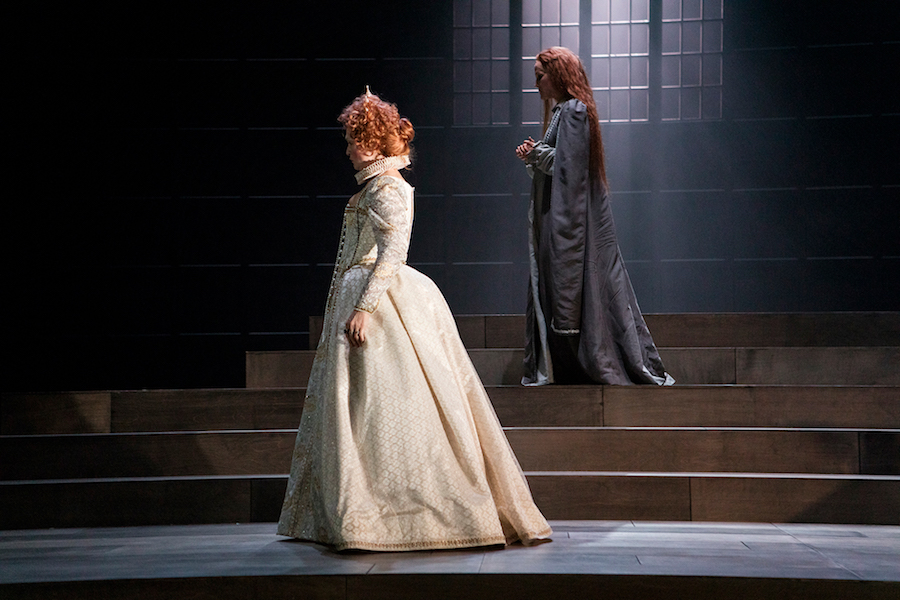Elizabeth, bone-tired and wigless, weeps as she signs Mary’s death warrant. She blows her nose once, then again, a commonplace gesture that registers as remarkable once you remember that this is a story of queens, and you are beholding Gloriana. It’s a female bodiliness rarely presented onstage, being neither sexualised nor bearing the signs of violence. Instead, it’s utterly mundane, unpretty in the way that corporeal matters often are. This attention to detail and deep humanity, conferred by Kate Mulvany’s adaptation, Lee Lewis’ production and Helen Thomson’s portrayal, makes this new take on Friedrich Schiller’s 1800 play Mary Stuart completely electrifying.
 Helen Thomson and Caroline Brazier in Sydney Theatre Company’s Mary Stuart. Photo © Brett Boardman
Helen Thomson and Caroline Brazier in Sydney Theatre Company’s Mary Stuart. Photo © Brett Boardman
Mulvany’s bold adaptation recentres the queens, shearing away nearly every male soliloquy and interaction held exclusively between men, of which there are an abundance in Schiller’s text. This doesn’t detract from the play’s vibrant political context or underplay the male courtiers’ constant machinations. Rather, Mulvany simply trusts us to understand the pressures exerted on Elizabeth and Mary through their increased presence in the play, affording both an interiority not available to them in Schiller’s original. Part of this is...
Continue reading
Get unlimited digital access from $4 per month
Already a subscriber?
Log in










Comments
Log in to start the conversation.